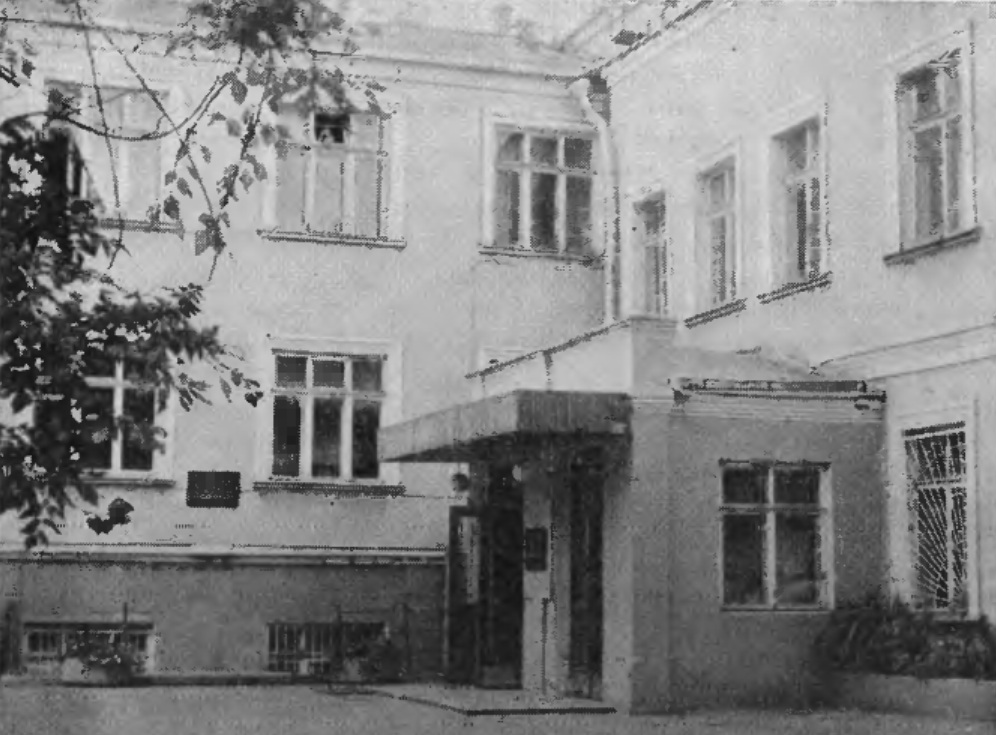
Institute of Electrochemistry of the Academy of Sciences of the USSR was established in 1957, as a result of Frumkin’s 1955 report on power sources presented for some governmental commission. The Institute was formed on the basis of the Electrochemistry division of the Institute of Physical Chemistry (R.Kh. Burshtein, B.N. Kabanov, V.G. Levich, N.A. Bakh, and P.I. Dolin are listed as the key researchers in the available 1957 document). This division established in 1946 was basically an extended version of Frumkin’s initial lab of the electrode processes. The Institute of Electrochemistry first consisted of four laboratiories and the theoretical Dept, as determined by the 1958 order of the Academy. The Institute was named after Frumkin in 1983. Starting from 2005, this small institute was incorporated into its parent Institute of Physical Chemistry. This new joint institution is now named Frumkin Institute of Physical Chemistry and Electrochemistry. In what follows, we use the name Frumkin Institute for the original institution founded by Frumkin.
The Institute was located in this very modest building near Leninskyi prospect, with a large park on the opposite side of this wide and noisy street (‘Neskuchnyi sad’). The ground floor (grey bottom part of the building) was mostly occupied by mechanical workshops, but also hosted vibration-sensitive equipment, including optical. The upper part of the right wing (above the entrance) was a conference hall. Frumkin’s office was located at the upper floor of the left wing, with the windows (not seen in the photo) facing towards the street. The Institute also included an even smaller building nearby, which accommodated Bagotsky’s division, small library, and the glassblowing workshop. The total number of employees (scientific staff) never exceeded 100, and the number of technical staff was comparable.

Separate pages are devoted to Veniamin G. Levich, Vladimir S. Bagotsky, Boris N. Kabanov, and Lev I. Krishtalik, whose names are symbolic for research directions of the Frumkin Institute. We tried to present the closest collaborators, pupils, and followers of these scientists in the separate lists linked to corresponding personal pages. People from the earliest 1920s – 1940s generations are introduced at the Karpov Institute and Moscow University pages. Other known persons from Frumkin Institute belonging to the next generation of Frumkin school are listed alphabetically at this page.